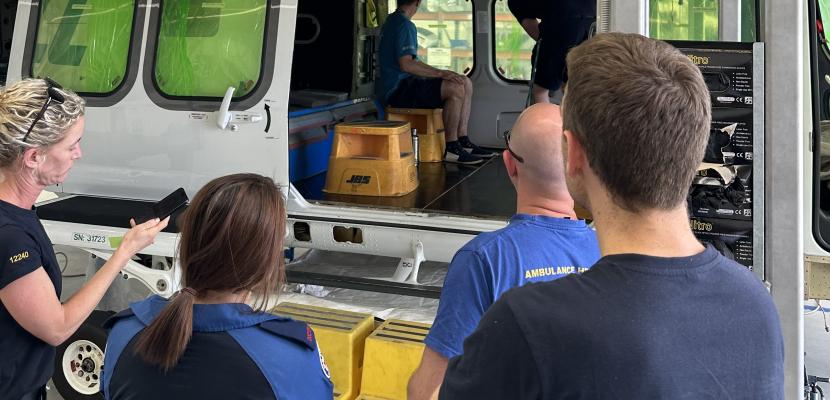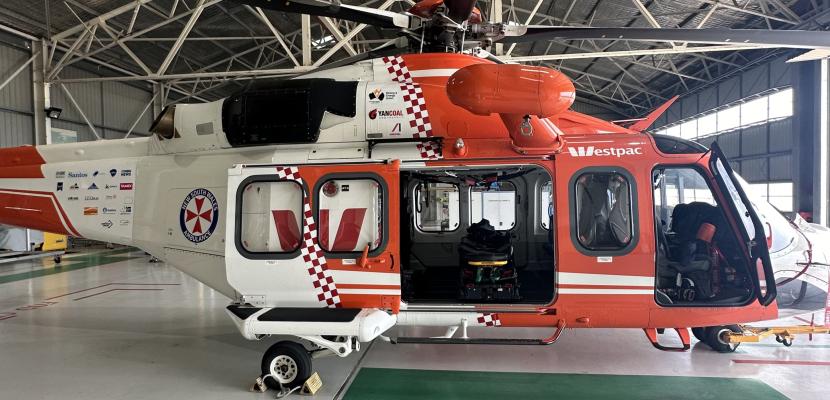Curriculum beyond the classroom
I spent my summer break with flying doctors and nurses. Here's what I learned
By medical student Spiro Livanes
Key Features
Instead of a break over the summer holidays, I decided to spend my time gaining valuable experience in the niche specialty of prehospital and retrieval medicine (PHRM). With the support of Bond's Student Opportunity Fund, I was able to spend two weeks with the fantastic doctors, paramedics, nurses, pilots, aircrew, and support staff of the Aeromedical Operations Team of NSW Ambulance. If you are critically unwell within New South Wales, they will be there to help. They operate a fleet of airplanes, helicopters, road ambulances, and specialised neonatal and paediatric ambulances to reach patients, regardless of geography, from bases across the state.
I spent my first day touring the state-of-the-art training facility located within Bankstown Airport in Sydney’s west. From this base, NSW Ambulance operated three helicopters and two road ambulances. The Neonatal and Paediatric Emergency Transport Service (NETS) was in a separate hangar across the airfield, operating five specialised intensive care ambulances within Sydney alone.

Rich Text
A $25 million flight simulator, high-fidelity training pool, virtual reality helicopter cabin, and a mock hospital ward, were some of the tools available to the crews of the base to ensure they were trained to provide a world class level of care. I spent several days and nights responding to critically unwell patients by road across Sydney, watching and assisting these elite doctors and paramedics as they worked to save lives.
During downtime on base, I observed that constant training was a massive part of the everyday. The safety of patients and crew was the highest priority, with an incredible amount of logistics going into every mission. Twice daily, the road and helicopter crews would meet to discuss weather, staffing, fatigue management, and fuelling requirements for the upcoming 12-hour shift so that they could be best prepared for any situation.
My mentors over my two weeks with NSW Ambulance had hundreds of combined years of experience.
— Spiro Livanes
Rich Text Narrow
Later, while in placement, I spent time at the air ambulance base within Sydney Airport. Here, a fleet of five propellor planes and one jet plane sat on the tarmac, fuelled and ready to provide life-saving care. Skilled flight nurses with years of critical care knowledge accompany a pilot on missions out to regional and rural hospitals. They are often picking up very unwell people, to bring back to a major metropolitan hospital for advanced treatment. If required, a doctor from the Bankstown base can accompany the flight nurse for particularly life-threatening emergencies.
Here's what I learned during my time in prehospital and retrieval medicine
The knowledge and experience shared by the clinical teams were followed by a culture of teamwork and collaboration. Here are the key learnings I came away with after two weeks on placement:
- Using a collaborative approach to clinical leadership, and making sure that everyone in the team can have their voice heard is not only good teamwork but it's in the best interest of your patients as it improves clinical outcomes.
- You should always assume the best in people, whether it be your teammates, hospital colleagues, or patients. Use kindness, curiosity, and generosity in your approach to clinical situations, especially when taking handovers from other medical teams that are often doing the best they can with the staff and equipment available to them.
- As a team, train with and utilise systematic approaches and shared mental models to facilitate smooth teamwork and minimise cognitive load/overload.
- Be prepared and anticipate issues in your patients before they happen. It's most important to do this in the aeromedical setting (before being stuck at 10,000 ft!), but it is still important to do on the wards.
- Adopt a non-judgemental coaching model so that team members feel comfortable being vulnerable with their colleagues. Whether at a coffee and cases chat, or at a morbidity and mortality meeting, work through issues as a team to address how system change can be facilitated to relieve human factors.
- Recognise your teammates who are performing. Attention doesn’t only need to be given to mistakes and bad outcomes.
Ultimately, my mentors over my two weeks with NSW Ambulance had hundreds of combined years of experience. Not only in clinical but also in leadership settings — fostering an amazing culture of respect, clinical excellence, safety, and kindness that I have never seen before.
Image Grid


Explainer
Explore medicine at Bond
Kickstart a rewarding career in medicine with Bond's Medical Program. The fastest pathway to becoming a doctor in Australia, you can graduate in just four years and eight months.
Learn more about the Student Opportunity Fund
The Student Opportunity Fund supports students in achieving their goals through out-of-the-classroom experiences. Opportunities are made possible through generous donations of Bond alumni.

